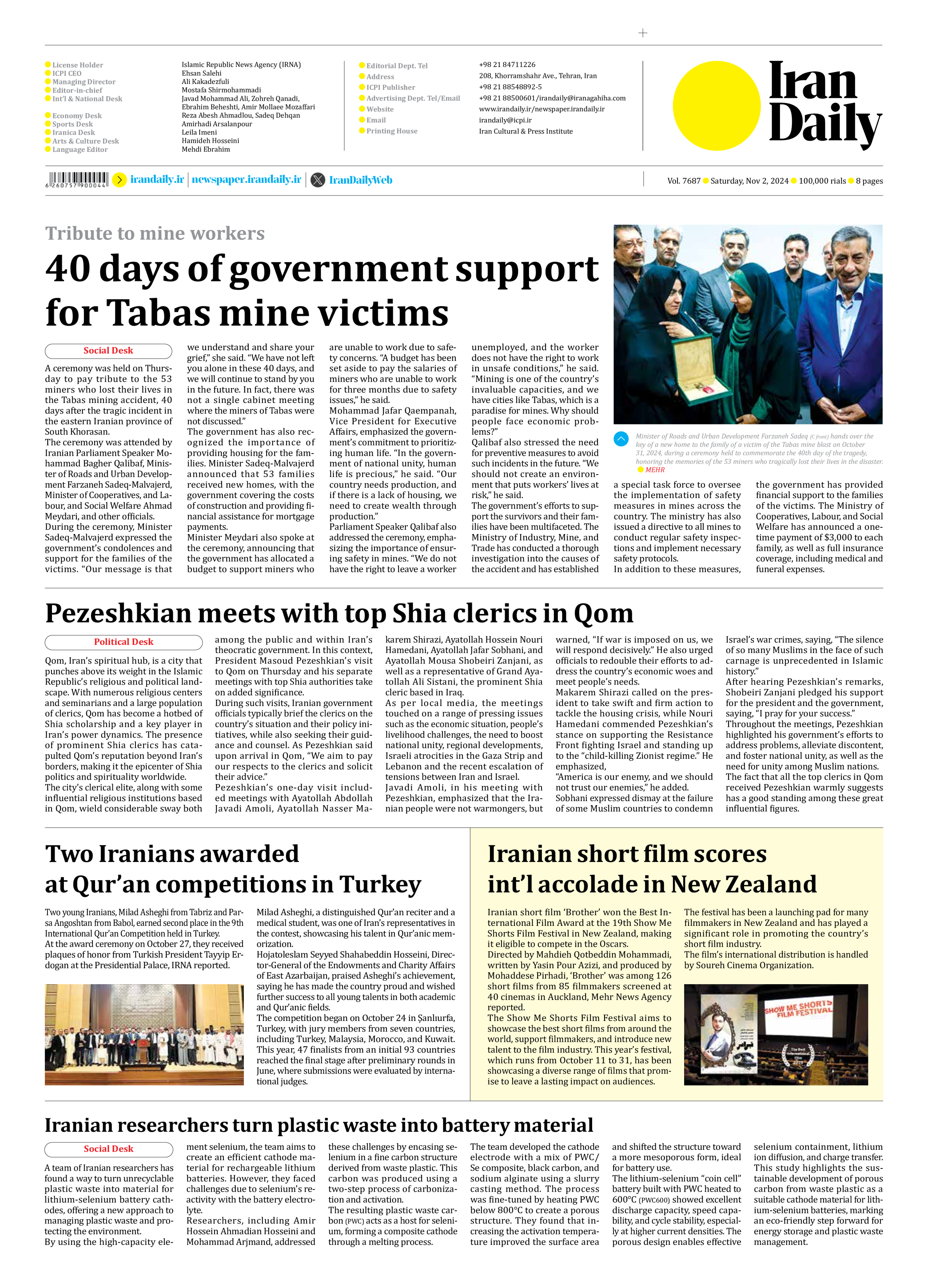
Iranian researchers turn plastic waste into battery material
A team of Iranian researchers has found a way to turn unrecyclable plastic waste into material for lithium-selenium battery cathodes, offering a new approach to managing plastic waste and protecting the environment.
By using the high-capacity element selenium, the team aims to create an efficient cathode material for rechargeable lithium batteries. However, they faced challenges due to selenium’s reactivity with the battery electrolyte.
Researchers, including Amir Hossein Ahmadian Hosseini and Mohammad Arjmand, addressed these challenges by encasing selenium in a fine carbon structure derived from waste plastic. This carbon was produced using a two-step process of carbonization and activation.
The resulting plastic waste carbon (PWC) acts as a host for selenium, forming a composite cathode through a melting process.
The team developed the cathode electrode with a mix of PWC/Se composite, black carbon, and sodium alginate using a slurry casting method. The process was fine-tuned by heating PWC below 800°C to create a porous structure. They found that increasing the activation temperature improved the surface area and shifted the structure toward a more mesoporous form, ideal for battery use.
The lithium-selenium “coin cell” battery built with PWC heated to 600°C (PWC600) showed excellent discharge capacity, speed capability, and cycle stability, especially at higher current densities. The porous design enables effective selenium containment, lithium ion diffusion, and charge transfer.
This study highlights the sustainable development of porous carbon from waste plastic as a suitable cathode material for lithium-selenium batteries, marking an eco-friendly step forward for energy storage and plastic waste management.







